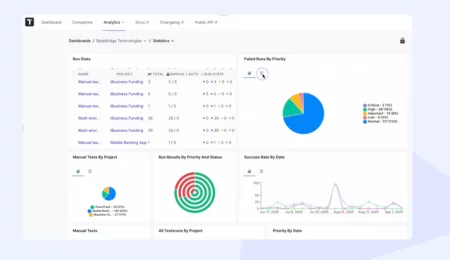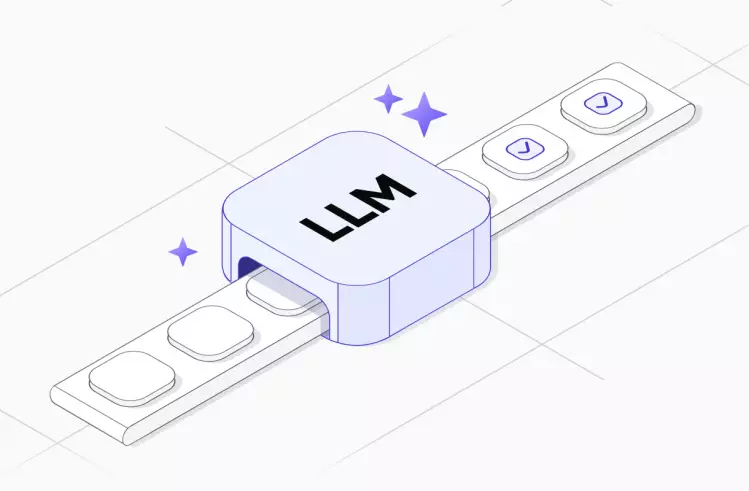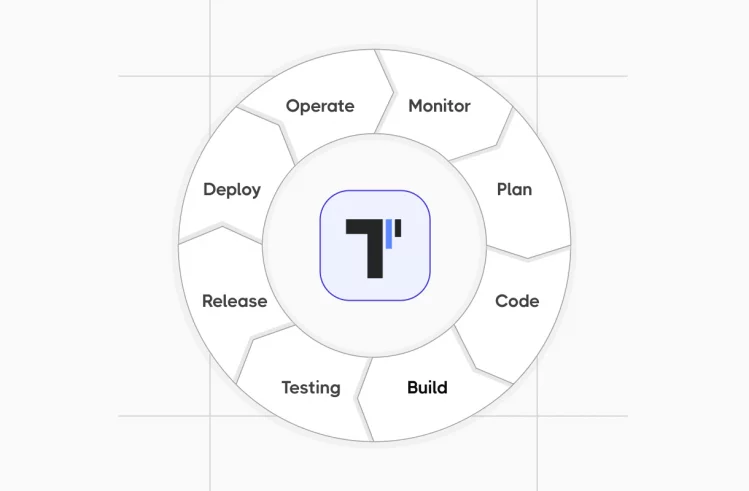Many development teams face certain problems when implementing quality assurance during SDLC. By implementing on-project Scrum, you can seamlessly integrate the testing process into your daily software development efforts. This will accelerate the creation of high-quality software products, save budget, and bring other benefits to the entire team. The result will be staying competitive in today’s fast-paced world.
You may pay attention on these articles 👀
Definition and Essence of Scrum Methodology
The Term Scrum refers to the Agile methodology of developing software solutions. It is a framework that Agile teams use to work together on a project and achieve common goals. It involves work divided into small time intervals – sprints. As a rule, they last two weeks, but their duration can vary depending on the needs of the team.
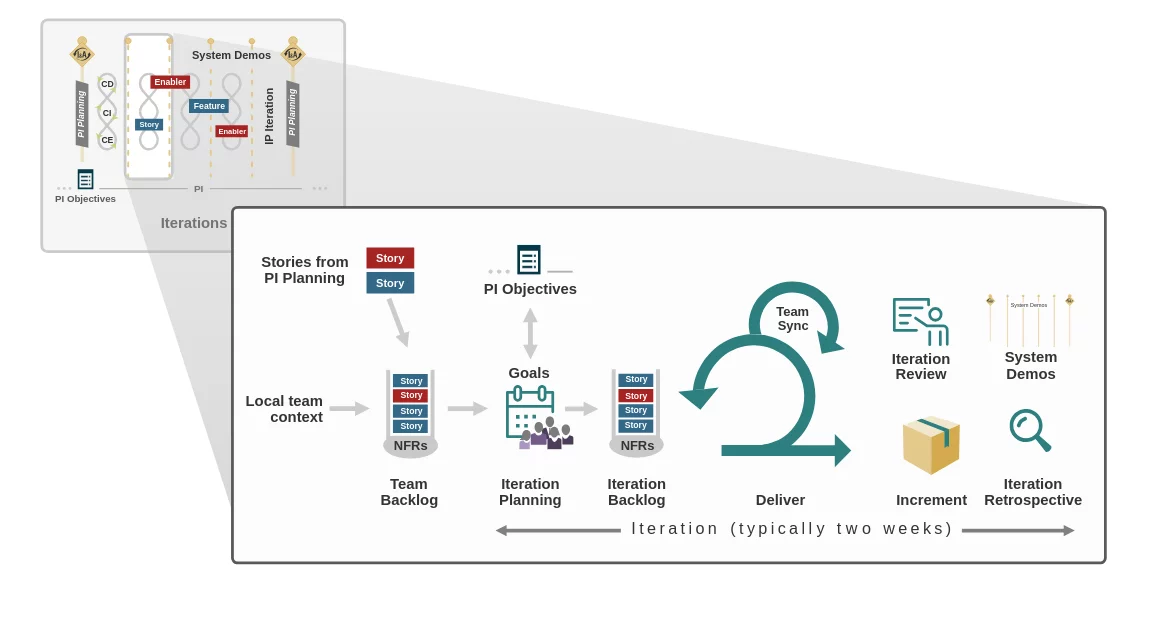
One of the integral components of Scrum process is testing, which is fundamentally different from traditional testing model works.In the traditional Cascading(WaterFall) approach to software testing, the team first creates a digital solution, checks its quality and eliminates defects. Whereas in Scrum testing is a method of regular evaluation of the performance and usability of the product. That is, the program is tested throughout the entire development process, so that the project team receives a reliable, high-quality solution upon completion.
Another unique feature of Agile Scrum testing is the absence of an active role tester as such. Of course, QA team can be involved in the work on the project as needed – it will depend on the specifics and scope of the required work.
However, in classic Scrum Quality Assurance tasks also developers are involved widely. They fulfil them by running Unit tests. This is possible due to the fact that the teams that have implemented this framework are cross-functional. That is, they do not depend on other teams and all those outside of them.
Scrum methodology defines a set of concepts on which the work of Agile teams is based. Let’s talk about them further.
Scrum Artifacts, Roles, and Processes
In order to get into the essence of the Scrum process, first, it is necessary to understand the basic terminology that is used by users of the framework within their work processes. These are the so-called Scrum artifacts – concepts that teams and stakeholders use to detail the digital solution being created and to perform basic actions on the project. These include:
- Product backlog is a list of new features, changes, tasks, or requirements needed for software product development. It is compiled using deep business analysis. It allows you to determine the current market requirements and evaluate competitors and users’ expectations.
- Sprint backlog is a list of requirements and functionalities that are defined as mandatory for implementation in the current sprint. They are selected from the product backlog depending on their criticality. Subsequently, the selected tasks are broken down into smaller subtasks for the convenience of working with them within one sprint.
- Increments – the results of work on the project achieved during one sprint, which was decided to demonstrate to the client. They also include the results achieved in previous sprints. This artifact is useful for version tracking and rollback.
There are also supporting artifacts in Scrum that allow you to track the progress of the work. These include the burn down chart and the definition of “done” (DoD). The first is a chart showing tasks completed during the sprint. The second is a list of conditions and requirements that must be met to complete the task and determine if the increment is ready.
The Scrum team assumes to effectively complete the tasks the next ⬇️
3 Scrum roles
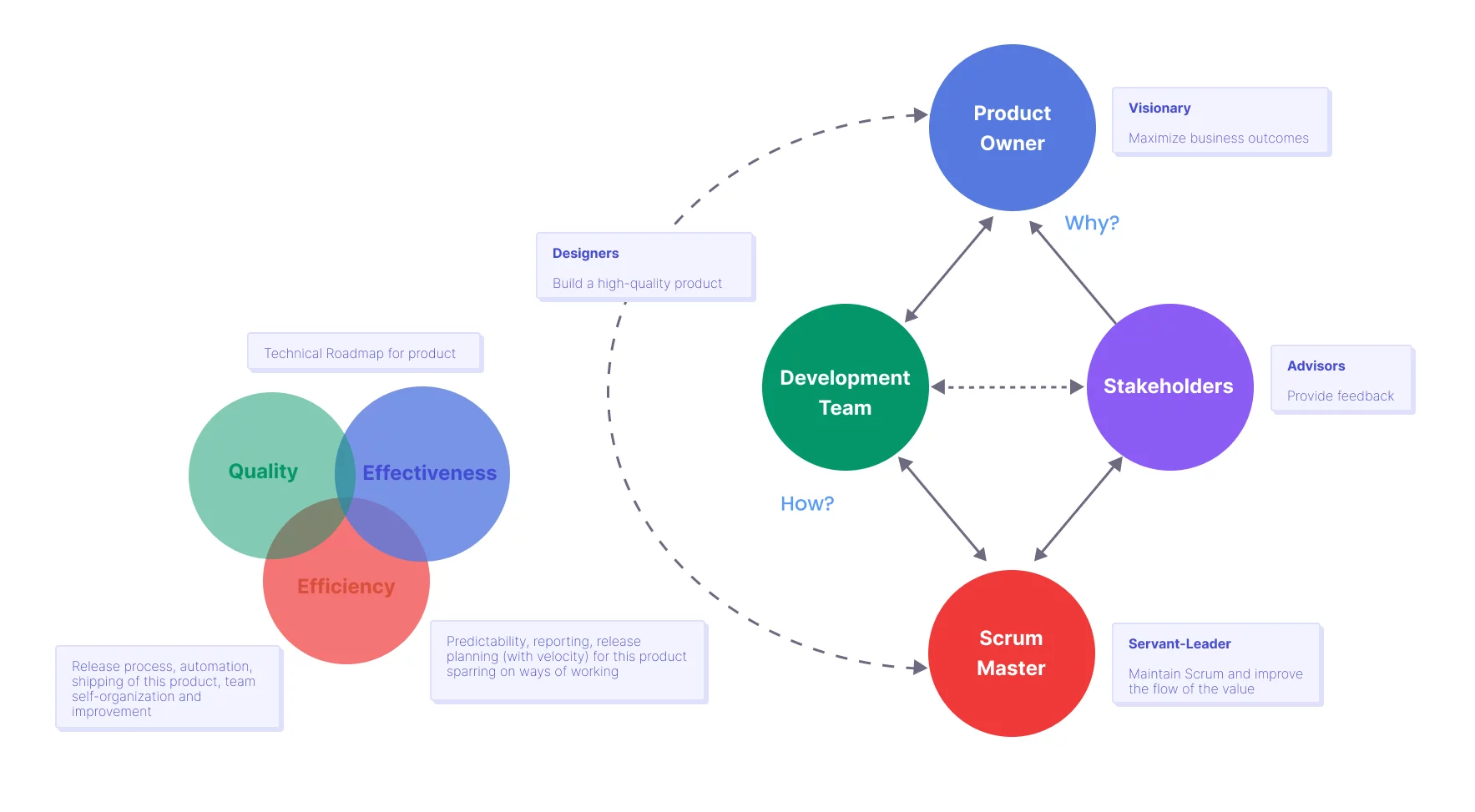
Product Owner
This is a team member who plays a key role in the project, acting as a link between the team and other stakeholders. Team members are responsible for a number of important functions, including:
- Defining the main characteristics of the product. It is the product owner who is responsible for creating the vision of the product and its compliance with business goals.
- Prioritizing the work on the project. This person determines the order of tasks depending on the value of each function for the business, the needs of the client and its target audience, and the return on investment.
- Communication with stakeholders. The duties of such a specialist include frequent communication with all stakeholders. It involves collecting continuous feedback, reporting on the results of the work done, checking implemented features, and discussing possible adjustments and compromises.
- Acceptance or rejection of the completed work. After the completion of the next sprint, the product owner checks whether the sprint goals have been achieved. For this purpose, the product owner evaluates whether the results meet the acceptance criteria and quality standards.
Scrum Master
This is the Scrum team manager who controls and regulates the workflow and monitors the team’s productivity. Manager functional responsibilities include:
- Organization and execution of Scrum events. Successful work according to Scrum methodology implies regular organization of various working meetings, which we will talk about a little later. Their coordination is the responsibility of the Scrum Master. The Scrum Master should ensure that each Scrum meeting is effective and relevant to the topic.
- Removing obstacles that hinder project progress. The manager can solve problems, ask for help from other team members, and in some cases co-operate with external teams.
- Frequent communication with team, product owner, and other stakeholders. Scrum Master is a kind of link between ordinary specialists, team leaders, and other persons related to the project. The Scrum Master should encourage collaboration within the team and ensure mutual understanding and close communication.
- Promoting Scrum practices. Introducing employees to the intricacies of the Agile process, teaching Scrum best practices and monitoring compliance with them – all of this is also the responsibility of the Scrum Master.
Development Team
These are the team members on whom the software development process directly depends. As a rule, they know the Scrum product like no one else, and the actual project results depend on the quality of their duties. The work of developers in Scrum involves:
Software product development. This process includes preparation of product increment to the end of the sprint. Each version of a digital solution must be ready for deployment, contain a specified set of features and meet the specified requirements.
- Self organizing. The development team must plan and organize the workflow itself, without interference from external forces. They must adapt its approach to tasks to achieve sprint goals.
- Co-operation within the team. Each developer should work closely with other team members, Scrum Master and Product Owner. It should discuss potential issues, project progress and team needs to achieve better results.
- Ensuring transparency of Scrum process. It is the development team’s responsibility to keep the Scrum board and all artifacts up to date. The progress of the work should be easy to track and clear to stakeholders.
Finally, let’s move on to Scrum ceremonies or meetings that team members hold while working on a project. The framework provides such varieties of them:
- Sprint planning meeting. Each sprint starts with sprint planning. As part of this process, Scrum Master should prioritize user stories from the product backlog and put them into the sprint backlog. In turn, team members evaluate the required development and Scrum testing efforts.
- Daily Scrum. These are short daily stand-up meetings during which the team discusses their achievements and failures from the previous day. During these meetings, you can track team progress.
- Sprint retrospective. This is a longer event that can last up to four hours. It is where the team conducts a sprint review. Team members discuss whether they were able to achieve the sprint goal, analyze the problems encountered, and celebrate their achievements.
Such precise workflow planning, systematic tracking of results, and strictly defined roles allow Scrum teams to achieve the most ambitious business goals and meet the needs of the target audience.
Scrum Benefits
Implementation of project Scrum methodology has a number of advantages – both for the team and for the business:
Workflow flexibility. Scrum teams work according to the Agile Manifesto, i.e., they adhere to the principles and values of agile development of software products. This approach allows them to quickly adapt to the changing requirements of an agile market. Working in short sprints, teams can easily make changes based on user feedback.
- High quality of the final product. Scrum focuses on continuous improvement of the digital solution. This is facilitated by regular sprint reviews and testing activities that identify bugs early in the SDLC.
- Quality communication on the project. Frequent sprint planning, stand up and retrospective meetings foster team bonding, increased understanding and working together to achieve common goals.
- Accelerating time to market. Scrum involves working on new features in short iterations, which allows each feature to be implemented faster. This allows you to bring a competitive product to market faster.
- Increased users satisfaction. Development based on continuous feedback allows you to take into account the slightest fluctuations in the needs of the target audience. This ensures that the finished digital solution fully meets users’ expectations.
- Process transparency. One of the priorities of Scrum is visualization of development and testing cycle. By using Scrum board, burn down chart and other tools, all team members and stakeholders will always be notified about the current progress.
The iterative and incremental approach of Scrum together with focus on continuous improvement allows teams to quickly create digital solutions of premium quality and meet the needs of customers and end users.
How is Scrum Testing Done?
In Scrum testing, QA teams use a powerful tool called Agile Testing Quadrants, which helps to define what to test, in what sequence, and how to do it.
The advantage of this approach is that each of these quadrants can be customized for a specific project. Agile Testing Quadrants, or as the tool was originally called, Matrice Marick Test, look like this:
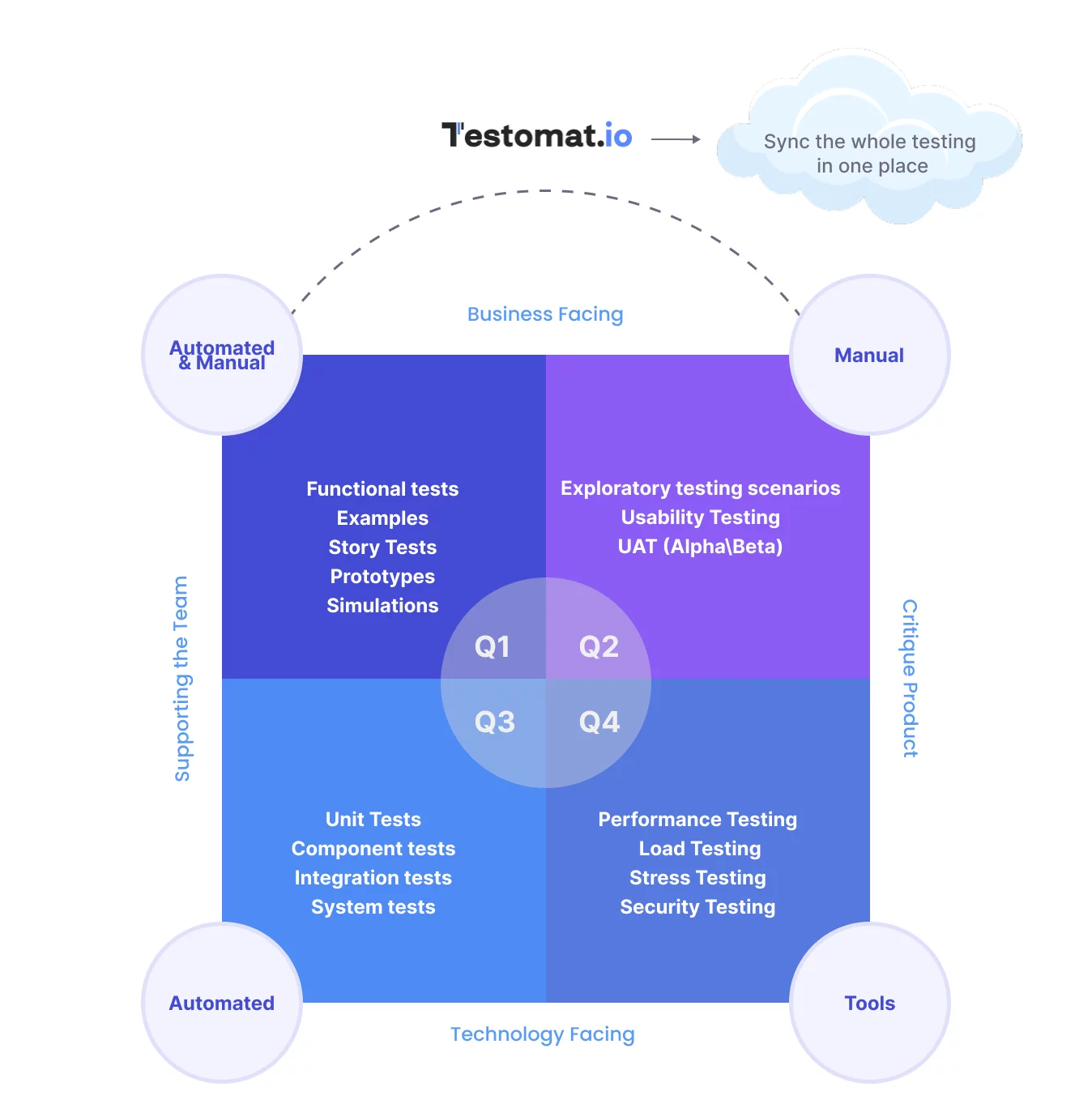
From this, we can see that the quadrants denote different QA aspects. They describe the types, methods, and purposes of testing:
| Quadrant 1:
Technology testing |
This stage involves checking the quality of the code and providing immediate feedback. For this purpose, component and unit testing is used. These types of tests allow you to check the quality of separate code sections and the correctness of units’ operation during their integration. Emphasis is placed on automated testing. |
| Quadrant 2:
Verify that the product meets business requirements |
In this phase, developers and testers must ensure that the product meets business goals. For this purpose, prototype, wireframe, and functional testing are used. Both manual and automated tests are useful here. |
| Quadrant 3:
Usability testing |
This quadrant allows you to evaluate the product from a usability perspective. Exploratory testing, usability, and user acceptance testing are applied at this stage. Alpha and beta testing is also possible. All testing activities at this stage are performed manually. |
| Quadrant 4:
Deep learning of the digital solution from a technological point of view |
Here, testers get the opportunity to evaluate non functional parameters of the application. Accessibility, reliability, and portability tests as well as performance, load, and security testing are relevant for the fourth quadrant. The QA process is carried out with the help of automation tools. |
Agile Testing Quadrants are able to provide the tester with an answer to all questions related to Scrum testing and optimize the process as much as possible.
Approaches to Testing in Scrum
In Scrum, the parallel use of two testing approaches shows equally good results:
Shift-Left Testing
This is an approach in which testers focus on test execution in the early stages of development. In this approach, unit tests predominate, and end-to-end testing takes a back seat. Another peculiarity is that test cases are written, and test developers execute them without involving QA specialists.
The shift-left approach allows for achieving certain positive results:
- improve the quality of the software solution;
- increase the percentage of test coverage;
- provide continuous feedback;
- accelerate the release of the digital product.
Shift-Right Testing
Unlike the previous approach, this approach shifts testing activities to a later stage. It involves checking the quality of the product after it has been deployed in the production environment.
Shift-right testing allows to make sure that the system is able to work in real conditions – to withstand user load without losing quality.
The approach can be used in any development methodology, but its maximum efficiency is shown in Scrum. This is due to the fact that the framework supports frequent releases. Thus, with the help of shift-right testing, you can test new features introduced during the last sprint.
Tester’s Responsibilities in Scrum
As we have already mentioned, in Scrum methodology, there is no active role tester, and functional responsibilities are assigned to developers. There may be some exceptions to this rule. For example, dedicated QA teams can be invited to participate in large-scale projects.
Scrum Testing Activities
What does a tester do on a Scrum project? This role involves the following responsibilities:
- Participate in sprint planning. The tester is directly involved in selecting from the product backlog the user story that should be tested first. The tester is also responsible for estimating the effort – i.e., the time required to test each story selected for the sprint backlog.
- Co-operation with development team during sprint. Testers can support developers who check the quality of the software product with unit testing. They also work on continuous testing at all stages of SDLC. Their responsibilities include writing automated test scripts and running tests that require manual execution. They also log the detected defects in bug tracking tool and retest them after fixing.
At the end of the sprint, the tester concludes that the test coverage is sufficient to complete the sprint.
- Participation in retrospectives. During retrospective meetings, QA specialist actively participates in discussion of positive and negative experiences during the last sprint. Specialist analyses the reasons for the difficulties encountered and suggests ways to prevent them in future work.
Changes for Tester After Scrum Implementation
When the team starts using Agile Scrum, the testing process on the project changes dramatically. Testers have to get used to new responsibilities and procedures, among which are:
- Attending regular meetings to track performance.
- Close collaboration with all team members and stakeholders to ensure effective teamwork and transparent processes.
- Performing testing at all stages of SDLC for early detection and fixing bugs.
- Continuous improvement of their knowledge and skills not only in testing but also in software development and business analysis.
- Focus on test automation to speed up regular testing and meet deadlines.
- Learning new tools to fully participate in the team. In addition to automation tools, testers in Scrum should be able to use project management system, defects tracking tools and other solutions used on projects.
All these changes have a positive impact on the tester’s performance and, as a result, on the team’s productivity.
The Difference Between Agile and Scrum
The main difference between the two is that Agile is a broader concept. It is a whole philosophy with its own principles and values that is used for all aspects of project management. Whereas Scrum is a practical methodology used to organize a specific process – software development.
The difference between these concepts is best seen from their definitions:
→ Agile is a set of approaches and practices based on a set of principles and values – the so-called Agile Manifesto. It is used as a comprehensive project management methodology and applies to the entire business.
→ Scrum is a software product development methodology from the Agile family that fully reflects its principles and values.
Potential Challenges for Testers in Scrum Testing
A tester who has not dealt with Agile testing before or has little experience with it may face some challenges. Here are some of them:
- Lack of established communication with other members of the Agile team. In traditional testing, testers work on their own without the need to communicate closely with developers and stakeholders. However, in Scrum, collaboration is at the heart of everything. Therefore, without strong communication skills, a QA specialist may have problems.
- Learning Scrum procedures from scratch. Due to the drastic differences between Agile Scrum Testing and QA processes in the Waterfall model, it can be difficult for a tester to adapt to the peculiarities of this framework without deep learning of its intricacies.
- Excessive customer demand. Of course, Scrum allows you to make changes to the project in the process of work. However, sometimes customers change requirements for the product too often, thus complicating automation testing.
Still, it is worth noting that these potential complications are negligible compared to the opportunities that Scrum testing provides. Don’t hesitate – in today’s highly competitive environment, it is something you should try.
5 Best Scrum Practices
To minimize potential problems and risks and maximize the effectiveness of Scrum testing, it is important to follow its best practices:
- Pay attention to automation. In Scrum, automated testing is crucial. After all, testing is done frequently and regularly, and automation allows you to speed up this process.
In addition, automated tests allow you to solve several problems at once. Let’s take regression testing as an example. If you have detected a regression in your code, you cannot approach its elimination as if it were a common bug. In this case, you should write an automated regression test to prevent regression in the future.
- Collaborate with developers. Besides the fact that the development team can write and execute unit tests themselves, it is important to involve developers in other QA processes – for example, in exploratory testing. This will help to detect maximum errors at the early stages of SDLC, because the program will be tested by specialists with different levels of knowledge and skills.
- Apply black box testing. According to experts, this approach allows you to eliminate bias when writing test code. After all, black box testing implies the creation of tests by specialists who do not know the source code of the application.
- Some Scrum teams go even further. They resort to test-driven development – a software development process in which the creation of tests is coded.
- Expand the scope of responsibility of testers. In addition to their immediate duties, they involve QA specialists in other processes on the project. For example, encourage their activity during sprint planning or requirements analysis.
- Choose a reliable test management system. After Scrum implementation, it is highly recommended not to continue creating test cases in the old way – for example, in Excel. The best solution is to use a progressive TMS that supports the Agile framework.
Conclusion
Initially, the transition to Scrum testing may seem like a daunting task to a QA specialist. However, continuous self-improvement and following its best practices will achieve impressive results in creating reliable, high-performance, and secure digital solutions.
